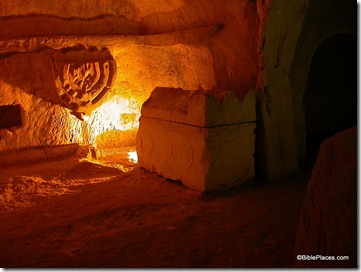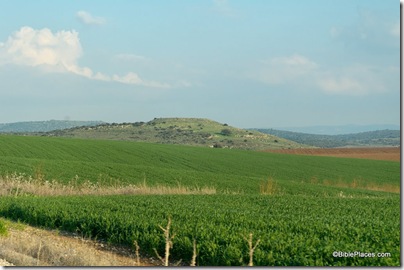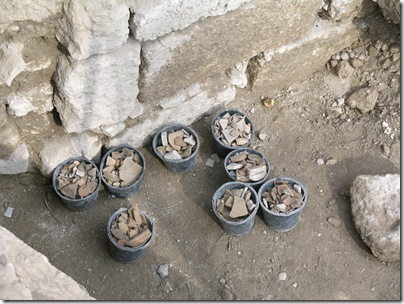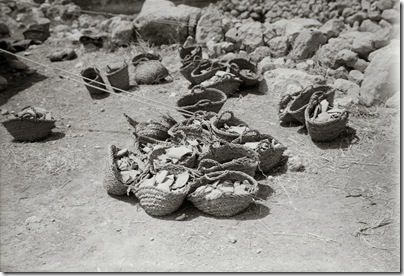The cave previously known as the “Cave of the Coffins” has been restored and renamed. From Arutz-7:
Knesset Speaker Reuven Rivlin unveiled a huge ancient relief depicting a seven branched menorah at Beit Shearim in the Galilee Tuesday. The menorah, which is 1.90 m. (75”) high, is one of the major tourist attractions at the renovated ancient burial cave site.
The burial caves were discovered decades ago but their recent renovation took place largely thanks to Rivlin’s initiative. In 2004, during his first term as Knesset Speaker, Rivlin visited the site and was stirred by the site of the numerous depictions of the menorah, which is the modern State of Israel’s symbol as well.
He took action to make sure that the site received special preference and that funds were allocated to its restoration and preservation. A team, which included restoration expert Jacques Neger and architect Ram Shoef, got rid of roots that had invaded the caves and restored the wall carvings, and the renewed site was opened to tourists.
The rest of the article, with photos, is here.
The Haaretz report adds this note:
Another two newly discovered burial caves not far from the current archaeological site will be opened to the public in three months.
Another Haaretz article notes the claims of a 93-year-old architect that he discovered the necropolis of Beth Shearim and not the famed watchman Alexander Zaid.
HT: Joe Lauer



